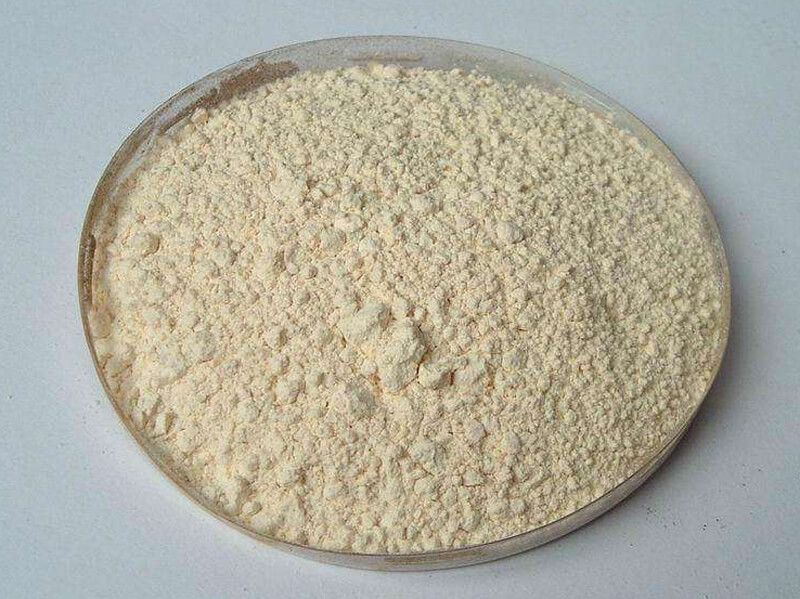Source of Diadzin-Kudzu Root Extract Pueraria Isoflavones 40%~99% HPLC/UV
Daidzin is a famous organic element. It is part of the class of phytochemicals which is known as isoflavones. It is available in Japanese plant kudzu such as Pueraria lobata, Fabaceae. It is also found in soybean leaves.
Daidzin is used for the treatment of alcohol dependency that is based on animal models. It is an isoflavone, which is as like as hormone substance found in soybeans. It is called most plentiful isoflavone after genistein. Various studies have shown that the genistein and daidzin is both an antioxidant and phytoestrogen, and it is often used to treat the present conditions affected by estrogen levels in our body.
Kudzu is a famous Chinese herbal root. According to the report of scientific studies, it extracts of kudzu, but it contains a variety of isoflavones such as daidzein, puerarin, and daidzin. It has been used to decrease alcohol consumption in our body. As we know, in a tiny human naturalistic double-blind placebo-controlled trial, the heavy alcohol drinkers were a significant reduction of the number of beers consumed without effect on the urge to take alcohol for participants who have received kudzu extract is known as puerarin 1000 mg capsules in three times daily for 1 week. It has no reported side effects of kudzu treatment in our body.The kudzu extract diadzin has been extracted as an aldehyde dehydrogenase 2 inhibitors, which has been available in various animal models to reduce our excessive drinking. There are Synthetic versions of this selective ALDH-2 inhibitor that are being investigated as potential medications to reduce relapse in abstinent alcoholics.
Some clinical trials will need to better understand the efficacy of synthetic variants or kudzu extracts for treatment of alcohol dependence. It refers to urge or the desire to consume and seek substances. It can be elicited by internal or can occur spontaneously or external stimuli. Daidzin can manifest in the first stage of the addiction cycle and it is mediated by neurobiological mechanisms. There are High levels of craving that has been associated with increased likelihood of relapse for alcohol and drugs.
Therefore, this medication can diminish cravings that have an important role in the treatment of drug and alcohol addiction. This reviews medications can target cravings for opioid, alcohol, stimulant, cannabis, and nicotine addiction. It includes oral and injectable acamprosate, kudzu, ondansetron, naltrexone, disulfiram, topiramate extract for alcohol addiction. It also includes buprenorphine, methadone, and naltrexone for opioid addiction. This daidzin is used for N-acetylcysteine, mecamylamine, modafinil, stimulant agonists for stimulant addiction. Many people use it for nicotine replacement therapies, bupropion, varenicline for nicotine addiction. We can use dronabinol, divalproex, buspirone for cannabis addiction. Future research must focus on the combinations of different medications which have synergistic effects on craving and behavioral therapies that can reduce craving and medications influence to different pathways.
Daidzin has many pharmacological benefits in the herbal remedy, and it is used as antioxidant and shown antidipsotropic activity. This Hairy root culture of Psoralea corylifolia L. was invented for enhanced daidzin and biomass production using signaling compounds like as acetylsalicylic acid (ASA) and jasmonic acid (JA). It is true that Best response of 2.8-fold daidzin with 1 μM JA treatment after 2nd week and 7.3-fold with 10 μM JA elicitation after 10th week that was obtained from hairy roots compared to other untreated control. This 10 μM promoted 1.7-fold to increase in daidzin content after the seventh week with control. It is resulted in 1.44% DW daidzin with 0.91% DW in control after 5th week and 1.44% DW daidzin after 8th week when compared to untreated control. It is used to reduce biomass with increased daidzin content that was facilitated by elicited hairy root cultures.
Usually, Daidzin is extracted from soya bean which is known as Glycine max and soya bean meal. We can also get daidzin from alfalfa (Medicago sativa), kudzu root (Pueraria lobata) and other Leguminosae plants in our nature. It is a famous cancer preventive which is used as an alcohol dependency treatment (antidipsotropic). This natural organic compound is found in the class of phytochemicals known as isoflavones. Thus this most efficient Daidzin is very efficient for our daily life and is used for medical treatment. We can use it without any hesitation.



 Healthier Future
Healthier Future